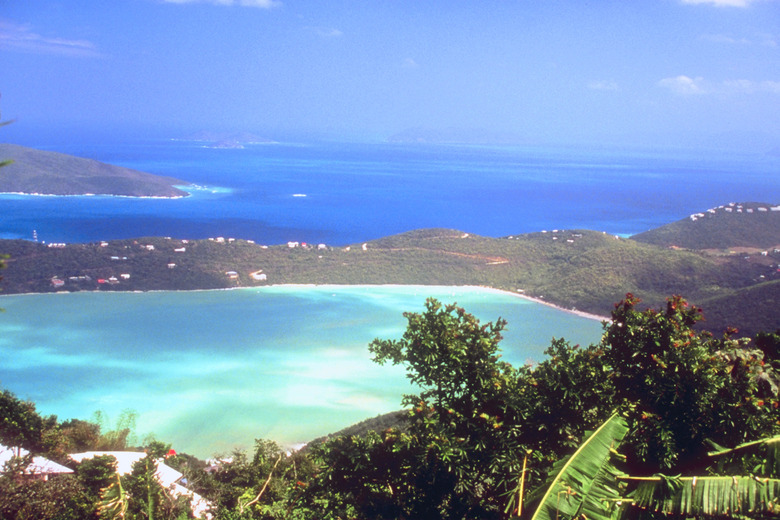What Is The Meaning Of Tropical Climate?
When someone tells you they're going somewhere "tropical," you likely picture a sandy beach, a palm tree and a brightly colored drink with an umbrella inside. Though it's not quite a spot-on definition, this mental image you've just conjured isn't far off from the meaning of a tropical climate! This is primarily because the first thing that comes to mind when you think of "tropical" is warmth.
Tropical Climate Definition
Tropical Climate Definition
The core defining trait of a tropical climate is the warm temperature. The mean temperature year-round is 64 degrees Fahrenheit. Another core characteristic of tropical regions is their variability in temperature. On a daily scale, the temperature can vary drastically, as much as 20 degrees, but on an annual scale the seasons don't vary nearly as much in temperature.
Researchers also consider tropical regions as areas in a specific location on the globe as well. The region known as the "tropics" runs from the Tropic of Cancer in the Northern Hemisphere down across the Equator and to the Tropic of Capricorn in the Southern Hemisphere.
Types of Ecosystems in Tropical Climates
Types of Ecosystems in Tropical Climates
Tropical climates can contain many different types of ecosystems, from deserts to tropical rainforests. These ecosystems often differ based upon rainfall in the region. The various tropical ecosystems include:
- **Tropical rainforest:** These forests are primarily defined by the amount of rainfall they receive. Rainforests receive a minimum of 80 inches of rain per year and up to 400 inches in a year. They also never receive frost conditions.
- **Cloud forest:** These rainforests are defined by their altitude. They occur higher in the mountains than tropical rainforests and often have a shroud of mist or fog over them, reducing sunlight. They have high rainfall but lower temperatures due to their altitude.
- **Wetland:** While tropical rainforests have lots of rain, wetlands just have lots of water. Their soils often have poor oxygen content, and plants have specializations to survive in saturated environments. One particularly useful adaptation for plants are air roots, which extend above the ground to absorb oxygen from the environment.
- **Dry deciduous forest:** These forests are also defined by rainfall. Unlike rainforests, deciduous forests undergo a marked wet season and a dry season.
- **Spiny forest:** These forests have unpredictable rainfall, poor soil conditions and extended periods of drought. In fact, droughts in these ecosystems can last several years! The best example of this type of forest is the Madagascar spiny forests or spiny thickets.
- **Desert:** Deserts are defined by their low rainfall levels. Because of the low rainfall, they also typically have sparse vegetation as well. Plants and animals in these ecosystems have special adaptations to conserve water.
- **Alpine:** Alpine habitats occur in the highest altitudes of tropical regions. They contain no trees and only sparse vegetation and hardy animals. Despite falling within "tropical" regions, these habitats typically have cold temperatures due to their elevation.
Types of Animals in Tropical Climates
Types of Animals in Tropical Climates
Many types of animals live in the different ecosystems of tropical climates. The animal species of tropical rainforests tend to be quite well known, such as jaguars, capybaras, ocelots, caimans, howler monkeys and spider monkeys. Other well-known species exist in cloud forests, such as gorillas, kinkajous and sloths.
Tropical climates aren't just rainforests, however. You can also find camels, fennec foxes, ostriches and other wildlife within tropical desert habitats. One of the most unique tropical forests are the spiny forests of Madagascar. Also known as spiny thickets, this unique ecosystem features numerous succulent plants and hardy animals such as the radiated tortoise. Other notable animals living within spiny forests include lemurs, such as the sifaka and ring-tailed lemur.
Cite This Article
MLA
Zinni, Yasmin. "What Is The Meaning Of Tropical Climate?" sciencing.com, https://www.sciencing.com/meaning-tropical-climate-8722483/. 18 January 2022.
APA
Zinni, Yasmin. (2022, January 18). What Is The Meaning Of Tropical Climate?. sciencing.com. Retrieved from https://www.sciencing.com/meaning-tropical-climate-8722483/
Chicago
Zinni, Yasmin. What Is The Meaning Of Tropical Climate? last modified March 24, 2022. https://www.sciencing.com/meaning-tropical-climate-8722483/
